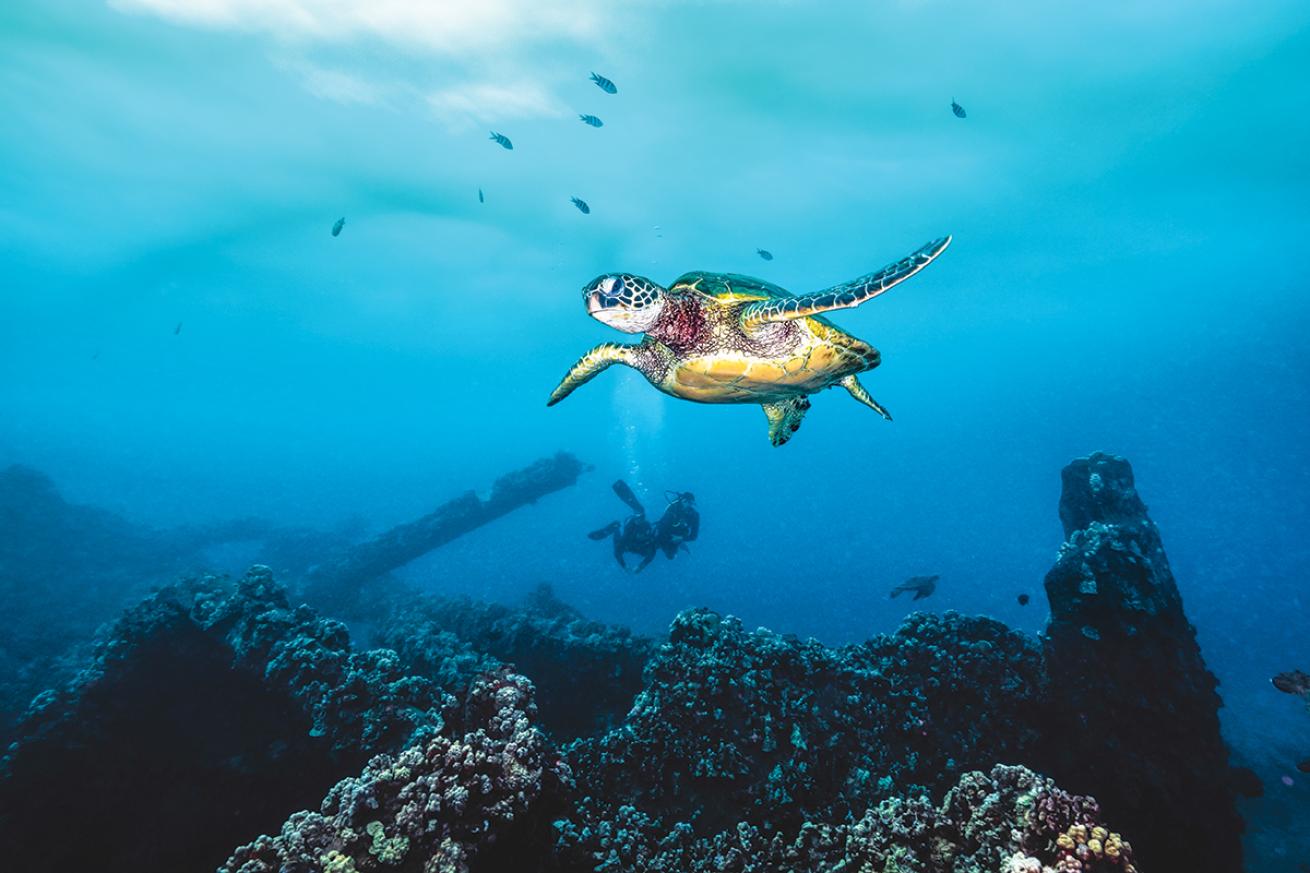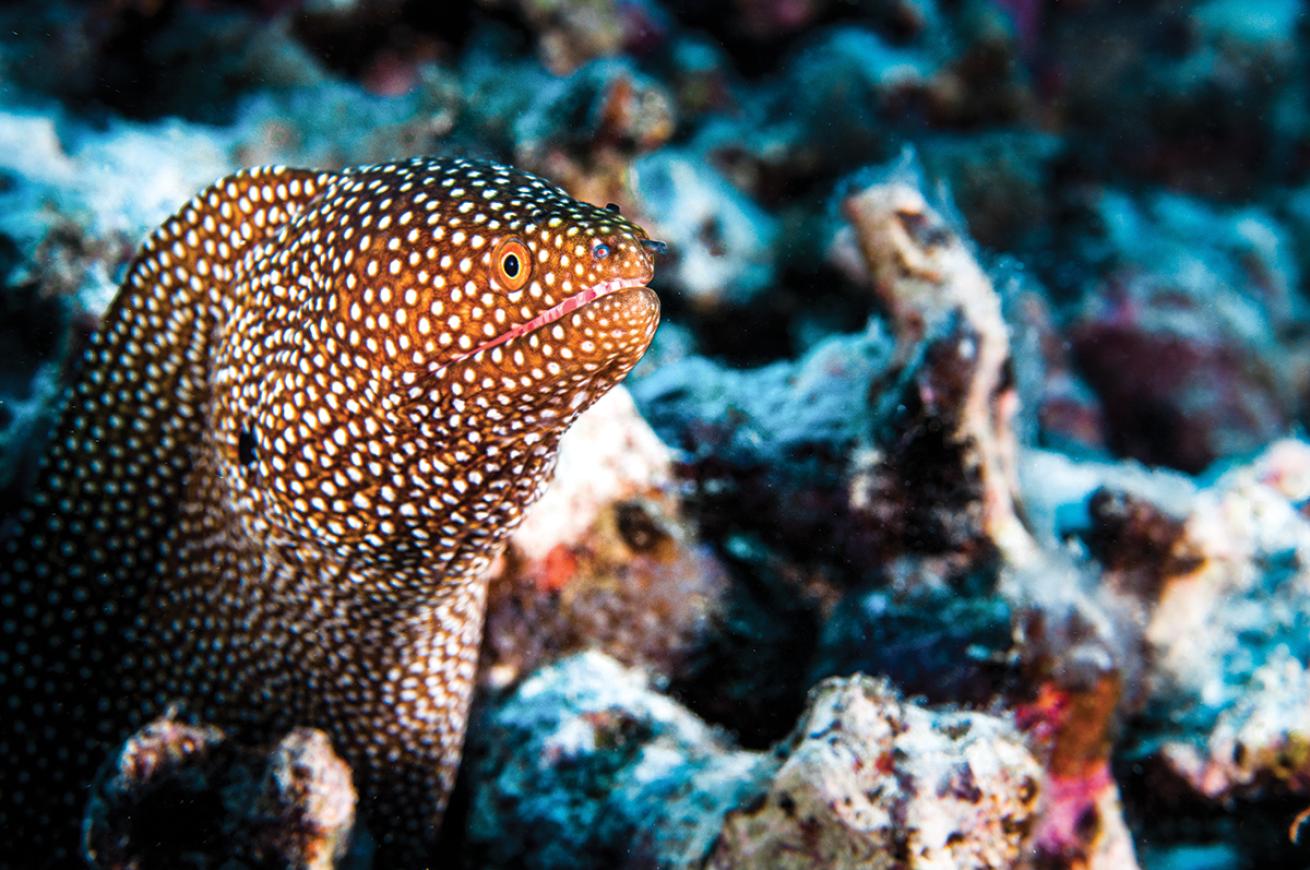Where to Scuba Dive in Hawaii

Jennifer IdolA green sea turtle at Mala Beach.
Although Hawaii’s economy is based primarily on tourism, some benefits have come from the islands’ lack of overwhelming crowds above and below water during the past year of travel restrictions. Wildlife has drawn closer to shore under quiet waters, and having fewer people makes the national parks an even more pleasurable outdoor experience. Schools of fish that once hid from snorkel and dive sites now mingle in the shallows. Above water, it is easier to schedule activities such as dining, which previously required reservations for all meals at even the smallest restaurants.
Today, visitors may travel to Hawaii as long as they follow state protocols. As immunizations become more widely available, the islands will continue to welcome back a steady flow of tourists. The best season to visit Hawaiian waters for reefs is summer, especially to islands affected by trade winds, such as Maui. On Maui, northern dive sites are inaccessible during windy months, and visibility is compromised around the island. However, shore dives in Lahaina and Kihei are available year-round, and charters can access places such as the hammerhead shark dives around Moloka‘i.
When possible, plan to fly directly to an island from the mainland rather than through the international airport in Honolulu. The only ferry is between Maui and Lanai, but inter-island travel is also possible through flights. Maui and the Big Island are popular dive destinations.
Rewarding dive experiences can be had on the islands in any season; visit Maui during winter months to avoid crowds. Additionally, humpback whales visit the islands during winter and can be heard underwater everywhere, singing throughout the season. Numerous operators offer whale-watching tours between November and April.
Book a charter or guide for the best and safest dive experience. Local divers know how to navigate strong currents and know the best places to dive for any season. Although all the islands offer diving, manta night dives and calm waters define Kona, while Maui is the premier place to observe protected sea turtles.
Dive Sites
Lahaina, Maui
The best shore diving can be found at Mala and Airport beaches in Maui. Mala is renowned for its green sea turtle cleaning station and whitetip sharks. Airport Beach is a classic Hawaiian beach that features transient big-animal life beyond two shallow reefs.
Kihei, Maui
Makena Landing Park is a great shore-diving area for finding small animals, including seahorses. Numerous sites in Kihei are named Makena, from the state park to the beach and landing. Coral structure at the landing is interesting because lava flow created grottoes and cavern structures.
Kona, Hawaii
Though known for its manta night dives, Kona also features a sloping coral wall that provides diving for all levels. Blacktip sharks can be seen cruising along the wall around 100 feet. Sea turtles are famous for resting on the nearby beach at Pu‘uhonua o Hōnaunau National Historical Park.
Trip Tips

Jennifer IdolThis spotted moray in Kona is one of more than 40 species of eel found in Hawaii.
1. Dining Out
Reservations are still recommended for any restaurant. On Maui, many local restaurants, such as the vegan eatery Moku Roots, use farm-to-table local produce. Macadamia nuts are a delicacy on the islands, and a worthy souvenir. Kona restaurants are most known for dining with world-class views of the ocean.
2. Haleakalā National Park
Rainbows are a symbol strongly associated with Hawaii and can be spotted nearly every afternoon on Maui. Halemau’u Trail is a summit hike that passes a point called Rainbow Bridge, known for stunning rainbow sightings, and ends at the floor of the crater.
3. Hawai‘i Volcanoes National Park
Kīlauea and Mauna Loa are active volcanoes that periodically erupt. Check the park website to learn where and when lava is flowing. Boat charters from Hilo operate when lava flows into the sea. Lava may start or stop at any time and is hard to predict.
Need to Know
Conditions Viz varies from 30 to 100 feet; water temps around 70°F in winter and 80°F during summer.
What to Wear 5 mm wetsuit.
Dive Shops Recommended by PADI
- Big Island Divers
- Dive Oahu
- Jack’s Diving Locker (Big Island)
- Maui Diving Scuba Center
- Maui Dreams Dive Co.
- Seasport Divers (Kauai)










